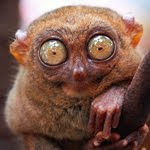Matilda Battersby, Beneath the Layers of Bacon, Independent, 24 March 2010
A new exhibition seeks to shed new light on Francis Bacon's working practises and expose the fallacy of the artist's own myth.
 “I can dream all day long and ideas for paintings just fall into my mind like slides,” Francis Bacon once said. The self-promulgated idea that the Irish-born figurative artist’s wonderfully twisted and subversive imagery appeared fully formed in his mind, not demanding high levels of planning, drawing and experimentation, provides an interesting mythical basis for Bacon’s genius.
“I can dream all day long and ideas for paintings just fall into my mind like slides,” Francis Bacon once said. The self-promulgated idea that the Irish-born figurative artist’s wonderfully twisted and subversive imagery appeared fully formed in his mind, not demanding high levels of planning, drawing and experimentation, provides an interesting mythical basis for Bacon’s genius.But a new exhibition of torn papers and photographs, manipulated film and other archival material harvested from Bacon’s studio, seeks to some way dispel this myth, by revealing the practise-runs, thought processes and scrawlings behind some of Bacon’s best work.
Co-curators Martin Harrison and Antonia Harrison have placed the scavenged studio artefacts alongside well known Bacon oil paintings, including five works never shown before in the UK, to demonstrate the root of some of his ideas, exhibited at the Compton Verney gallery in Warwickshire from this Saturday.
“No one ever saw Bacon work. But our research reveals a very different man from the public persona, which demands we unlearn what we think we know about him,” Martin Harrison said.
The notion that Bacon was only a spontaneous creative whose work emerged effortlessly and straight into paint, is rendered “unsafe” by the exhibition, the researchers claim. Bacon’s “collusion” in such ideas has been well documented, as is his devotion to other artists who often bypassed the drawing process, such as Picasso and Chaim Soutine.
Bacon said of himself that he “never knew what to paint,” yet pages of lists from a notebook taken from his studio in Reece Mews, South Kensington stand testament to his careful planning. As do the influences of other artists, particularly Velazquez, and even filmmakers like Buñuel and Resnais, according to the Harrisons.
“There’s a real risk that the myth of Bacon – albeit one in which the artist colluded- is all we will hand on to future generations. Yet the paintings are still by far the most important thing – it is only by reaching into those that we will ask the right questions and do justice to Bacon’s real genius,” Martin Harrison said.
Francis Bacon: In Camera is at Compton Verney gallery from 27 March until 20 June 2010.






No comments:
Post a Comment